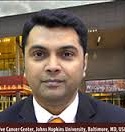
Biography
Biography: Nilanjan Ghosh
Abstract
Curative treatment options for relapsed or refractory lymphoma are limited. Both autologous and allogeneic hematopoietic stem cell transplantation have been used in this setting. Traditionally, allogeneic stem cell transplantation has been associated with a lower relapse rate than autologous stem cell transplantation due to the graft versus lymphoma effect. Traditionally, this benefit from allogeneic transplantation was offset due to higher non-relapse mortality when compared to autologous transplant. With the introduction of reduced intensity and non-myeloablative regimens, the non-relapsed mortality from allogeneic transplantation has decreased in the last decade. However, in selected high risk lymphomas, the use of reduced intensity transplant alone may lead to early relapse prior to the emergence of an effective graft versus lymphoma effect. In such situations a tandem approach of autologous transplantation followed by reduced intensity allogeneic transplantation has been successful. In addition, the use of alternative donor transplants has widely expanded the donor pool for allogeneic transplants. Careful selection of transplant modality based on disease characteristics and comorbidities is key to successful stem cell transplantation in lymphoma.
